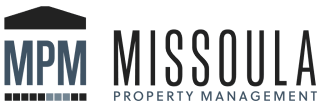Congratulations on becoming a new rental property owner! Owning and managing rental properties can be a lucrative and rewarding venture, but it also comes with its fair share of responsibilities. One of the most critical aspects of successful property ownership is maintaining your property to ensure it remains safe, attractive, and valuable. In this comprehensive guide, we’ll provide you with an essential maintenance checklist, tips, and best practices to help you start your rental property ownership journey on the right foot.
Why Rental Property Maintenance Matters
Effective property maintenance is not just about preserving the aesthetic appeal of your property; it plays a pivotal role in the long-term success of your investment. Here are a few reasons why property maintenance is so crucial:
- Tenant Satisfaction: Well-maintained properties attract and retain quality tenants who are more likely to take care of your property.
- Asset Preservation: Regular maintenance can extend the life of your property and its components, saving you money in the long run.
- Legal Compliance: Maintaining a safe and habitable living environment is a legal requirement in most jurisdictions.
- Property Value: Proper maintenance helps maintain or increase your property’s value, providing a higher return on your investment.
The Essential Maintenance Checklist
As a new owner, here’s your comprehensive rental property maintenance checklist:
1. Regular Inspections
- Conduct routine property inspections to identify maintenance needs promptly.
- Inspect the interior and exterior, including all living spaces, common areas, and the property’s grounds.
2. HVAC Systems
- Schedule annual inspections and maintenance for heating, ventilation, and air conditioning (HVAC) systems.
- Change air filters regularly to ensure optimal performance and air quality.
3. Plumbing and Fixtures
- Check for leaks and drips in sinks, faucets, toilets, and pipes.
- Inspect water heaters and flush sediment if necessary.
4. Electrical Systems
- Ensure all outlets, switches, and lighting fixtures are working correctly.
- Address any electrical issues promptly to prevent safety hazards.
5. Roof and Gutters
- Regularly inspect the roof for damage or leaks.
- Clean gutters and downspouts to prevent water damage and foundation issues.
6. Exterior Maintenance
- Maintain the landscaping, including mowing the lawn, trimming bushes, and removing debris.
- Check the condition of exterior paint, siding, and other finishes.
7. Interior Maintenance
- Repair and paint interior walls as needed.
- Check for signs of wear and tear on flooring, carpets, and tiles.
8. Appliances
- Regularly service and maintain all appliances provided with the property, including the refrigerator, stove, dishwasher, and washer/dryer.
9. Smoke and Carbon Monoxide Detectors
- Ensure that smoke and carbon monoxide detectors are in working order.
- Change the batteries in these devices as needed.
10. Security Systems
- If your property has a security system, ensure it is operational, and that tenants know how to use it.
11. Pest Control
- Implement preventive measures to keep pests at bay.
- Address any infestations promptly with professional pest control services.
12. Safety Measures
- Regularly check and maintain safety features such as fire extinguishers, emergency exits, and outdoor lighting.
13. Emergency Maintenance
- Create a plan for addressing emergency maintenance needs, such as plumbing leaks or electrical issues, 24/7.
14. Tenant Communication
- Establish clear channels of communication with your tenants for reporting maintenance issues.
- Ensure a prompt response to maintenance requests.
15. Documentation
- Keep detailed records of all maintenance and repair activities, including costs and service providers.
16. Budgeting
- Set aside a budget for property maintenance and improvements.
- Plan for unexpected repair costs by having an emergency fund.
17. Legal Compliance
- Stay up-to-date with local, state, and federal regulations related to property maintenance and safety.
18. Landscaping and Curb Appeal
- Maintain a well-kept exterior to attract and retain tenants.
- Regularly clean and repair pathways, driveways, and parking areas.
19. Seasonal Maintenance
- Implement seasonal maintenance tasks, such as snow removal in winter and leaf cleanup in fall.
20. Professional Services
- Consider enlisting the services of professional property management or maintenance companies to ensure high-quality work and efficient upkeep.
Rental property maintenance is an ongoing and vital aspect of successful property ownership. By following this essential maintenance checklist, new property owners can provide a safe, attractive, and desirable living environment for their tenants while preserving the long-term value of their investment. Effective maintenance not only keeps tenants satisfied but also reduces costly repairs, enhances property value, and ensures legal compliance. As a responsible property owner, you are not only maintaining your investment but also creating a positive and profitable rental property experience for both you and your tenants.
